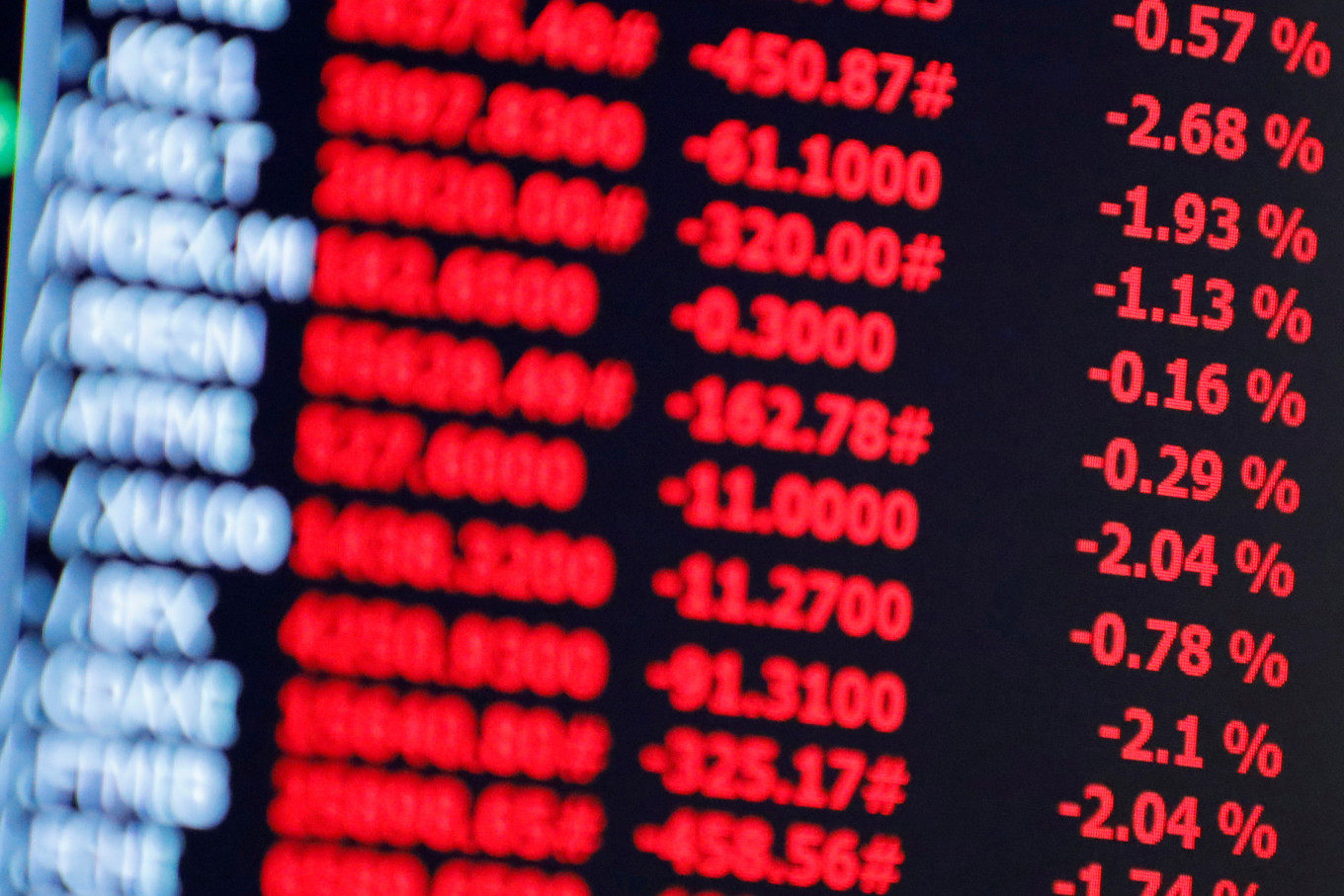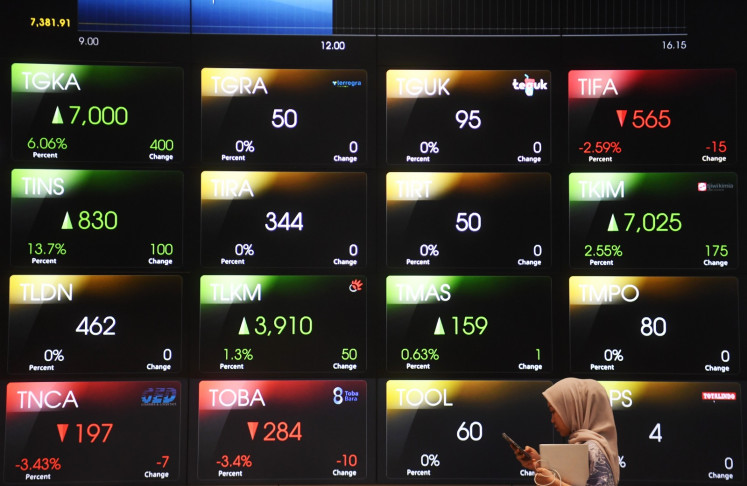Companies with negative cash flow could double in 2023: S&P report
The latest Global Debt Leverage report from S&P indicates that the number of companies with negative cash flow could double from 8 percent this year, with Chinese firms being the most vulnerable.
Change Size
 A screen on the trading floor of the New York Stock Exchange (NYSE) in Manhattan, New York, shows global indices on Aug. 19, 2021. (REUTERS/Andrew Kelly)
A screen on the trading floor of the New York Stock Exchange (NYSE) in Manhattan, New York, shows global indices on Aug. 19, 2021. (REUTERS/Andrew Kelly)
C
ompanies across the globe with average earnings in 2022 may stand a slim chance at gaining recovery momentum in 2023, as economic turbulence is likely to worsen next year, says a report from S&P Global Ratings released on Monday.
Titled Global Debt Leverage: Cash Flow Negative Corporates Could Double in 2023, the credit ratings agency projects that the debt-weighted ratio of cash flow negative firms will rise to 11 percent in 2023, from 8 percent in 2021.
In conducting the study, S&P repeated its stress tests from July this year on 20,000 unrated companies, and the results showed that less creditworthy companies were still vulnerable. Under the severe stress test, the ratio doubled to 16 percent.
The report, which does not constitute a rating action, assumes a 300-basis point increase each in interest spread and inflation over the S&P’s 2023 base-case assumptions.
S&P Global Ratings senior research fellow Terry Chan explained that heading into 2023, the odds of global corporations recovering was still in doubt.
“As the Russia-Ukraine war drags on and major central banks continue to fight inflation, global corporates face a triple whammy of lower growth, squeezed margins and deteriorating financing conditions next year,” Chan said in the release accompanying the report.
By region, the report reveals that Chinese firms are the most vulnerable, since its cash flow negative ratio rises the most in terms of percentage points when under stress. It is followed by other Asia-Pacific countries and emerging markets, and then Europe and North America.
In terms of sectors, the consumer discretionary, industrial and real estate sectors are predicted to see the slowest recovery next year and therefore, are more vulnerable to credit headwinds. S&P’s stress test show that these sectors are likely to see the largest increase in cash flow negative ratios.
“Although we expect cost inflation to ease in 2023, price pressures could linger if supply problems drag on, biting further into earnings. And stickier inflation could prompt investors to demand higher interest spreads to preserve real returns,” Chan said.









